Randy Newman revue opens at the Taper
November 12, 2010
The music of Oscar-winning composer and songwriter Randy Newman anchors “Harps and Angels,” a new stage production at the Music Center’s Mark Taper Forum, also premiering this week. Titled after Newman’s recent album – his first new collection of songs after more than a decade of prolific soundtrack work – the show offers a seasoned ensemble of performers the opportunity to dip into Newman’s vast catalogue of songs from the last five decades. Included are popular hits like “I Love LA” and “Short People,” as well as many lesser-known gems that are by turns wry, bitter and poignant. For tickets and information, see the Music Center’s website here.
Posted 11/12/10
An Island of Brilliance in Venice
November 12, 2010
The Co-Op at Pacific Resident Theatre in Venice this week opens the West Coast premiere of “Island of Brilliance,” a new play by Dawn O’Leary set to run through December 5. For reservations call (323) 460-2508. PRT, which this year celebrates its 25th anniversary of award-winning presentation, is located at 707 Venice Blvd. (4 blks west of Lincoln) in Venice. Visit their website for more information.
Posted 11/12/10
Battle of the bags redux
November 12, 2010
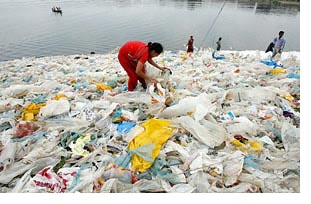 The Board of Supervisors on Tuesday is poised to enact one of the most far-reaching measures in the state to end the environmentally damaging proliferation of single-use plastic bags.
The Board of Supervisors on Tuesday is poised to enact one of the most far-reaching measures in the state to end the environmentally damaging proliferation of single-use plastic bags.
The highly-charged issue is being tackled by the board following the controversial rejection by the state legislature last summer of a ban on plastic bags. That vote came amid a furious multi-million dollar lobbying effort led by the American Chemistry Council, which represents industry players opposed to the measure.
The council has now turned its sights on L.A. County, sending out mass e-mails and using its Stop the Bag Police website to accuse the board of potentially undermining the economy and putting people out of work.
Environmentalists argue that the bags endanger wildlife, foul the beaches and ocean, and cost taxpayers millions annually to clean up. What’s more, they’re virtually indestructible, meaning the sacks can survive in the solid-waste stream for hundreds of years. Among the environmental groups that have written in support of the county’s efforts to ban the bags is Heal the Bay.
In January 2008, the board, led by Supervisor Zev Yaroslavsky, directed county departments to undertake an environmental analysis and develop draft legislation to ban the bags if a voluntary program failed to substantially reduce plastic sack consumption and promote more eco-friendly alternatives.
With the failure of the County program to achieve the targeted waste reductions mandated by the Board’s action, the tougher measures were pursued.
As outlined in a Board letter, Public Works’ preferred alternative would be to phase in a complete ban on plastic carryout bags in most stores in the county’s unincorporated areas, where the supervisors have direct jurisdiction. At the same time, a surcharge would be imposed on paper sacks to minimize a shift from one set of destructive environmental impacts to another. The goal is to get consumers to opt for the most cost-effective and environmentally friendly alternative—reusable bags.
Beyond banning the bags within its own jurisdiction, the county plan also calls upon its 88 incorporated cities to follow suit and adopt compatible programs at the local level to create a seamless countywide system that would serve as a model throughout the state.
For full details on the County proposal see the Final EIR part 1, and read the comments and responses in the Final EIR part 2. And for a deeper look at the political background of the controversy and its environmental implications, click here for an earlier account of the bag battle on Yaroslavsky’s website.
Posted 11/12/10
How’d your L.A. County district vote?
November 11, 2010
Although the rest of the nation may see us as one big, blue blob when it comes to elections, we are a diverse lot, we tribes of L.A. County.
True, voters here did more or less favor the Democratic candidates at the top of the ballot. But preliminary tallies supplied by the County Registrar-Recorder/County Clerk indicate that we begged to differ when it came to the propositions.
For example, only the Third District cast a majority of its ballots for the defeated Prop. 19, which would have legalized marijuana.
Although the last of the provisional and vote-by-mail ballots are being counted, here’s what we know now (see below) about how nearly 2 million ballots were cast in each of the five L.A. County supervisorial districts, ranging from the urban core, to seaside enclaves, to the high desert.
For a continuing look at the vote and results for a wide array of contests, click here.
Posted 11/11/10
Making a move on homeless at the Bowl
November 11, 2010
 Living in the hillside houses and condos above the Hollywood Bowl has long offered a taste of the rustic in the midst of the bustling city. For years, it’s also brought with it a stark urban reality: sharing the neighborhood with an encampment of homeless people.
Living in the hillside houses and condos above the Hollywood Bowl has long offered a taste of the rustic in the midst of the bustling city. For years, it’s also brought with it a stark urban reality: sharing the neighborhood with an encampment of homeless people.
Residents had long complained about crime problems and fire hazards associated with the impoverished community. “I know one of them came and jumped in our hot tub once,” said condo-dweller Jerry Shandy.
The Sheriff’s Department, which last year assumed policing responsibilities from county’s the Office of Public Safety, recently had its Parks Bureau set up shop at the county-owned Bowl, with a mandate to resolve the situation in a way that would help the homeowners as well as the homeless.
Sheriff’s Capt. Stephen Smith called in the department’s special problems team, which confronts crime and quality of life concerns in and around county parks. In addition to figuring out the logistics of shutting down the camp, the team created a plan to provide food, clothing and offers of shelter for the displaced.
 Deputy Jason Elkins, a 10-year sheriff’s veteran, twice walked the hillside and notified the homeless that, in the coming weeks, the area would be cleared. The Mountains Recreation and Conservation Authority, which manages the public land where the homeless had taken up residence, was brought on board, along with the county Department of Mental Health, Caltrans, the CHP, the Los Angeles City Fire Department and the nonprofit organization PATH (People Assisting the Homeless), among others.
Deputy Jason Elkins, a 10-year sheriff’s veteran, twice walked the hillside and notified the homeless that, in the coming weeks, the area would be cleared. The Mountains Recreation and Conservation Authority, which manages the public land where the homeless had taken up residence, was brought on board, along with the county Department of Mental Health, Caltrans, the CHP, the Los Angeles City Fire Department and the nonprofit organization PATH (People Assisting the Homeless), among others.
The effort was given a name that stressed its mission: “Hollywood Bowl Homeless Outreach Project”
“We didn’t want to leave anyone displaced,” Elkins said.
The operation began on October 27, with the team making its way up hillsides so steep that the homeless had created rope pulls to make the climb easier. Authorities had expected to encounter 30 homeless people but found that many, including one who’d been there for a decade, had left as a likely result of the notifications.
 Of the 14 who remained, ten accepted emergency shelter and the others voluntarily left, sheriff’s officials said.
Of the 14 who remained, ten accepted emergency shelter and the others voluntarily left, sheriff’s officials said.
Caltrans workers filled four trucks with the remains of the dismantled campsites. Follow-up work to remove overgrown vegetation took place Wednesday.
“From our perspective, unfortunately, we have to deal with these kinds of things quite a bit,” said Dash Stolarz of the Mountains Recreation and Conservation Authority, which now is working to restore the property and prevent new encampments. “It’s just a constant battle to make sure the parklands are safe.”
On Tuesday, Elkins and another team member, Deputy Nisha Sehdev, went back through the neighborhood Tuesday, talking to appreciative residents about the operation. One of them, Jack Calnan, spoke for the many when he said, “We really appreciate you being on top of it.”
A new tack on raves and drugs [updated]
November 9, 2010
At 63, John Viernes admittedly didn’t blend into the crowd. For one thing, he was wearing more clothes.
But there he was, director of Los Angeles County’s substance abuse and prevention office, positioned at the entrance of the Sports Arena, handing out 3-by-5 cards about the drug Ecstasy to the throngs at last month’s Monster Massive electronic music festival.
“This is really cool,” Viernes says he was told by a number of concertgoers, who actually kept the material. That included the scantily clad girl who gave him a high-five.
The cards—among dozens of recommendations offered this week by a task force on “rave” safety—represent a departure of sorts for the public health department as it experiments with a more credible way to connect with and influence its target audience.
The glossy, colorful cards carry the inherent message that public health officials know that some concertgoers are going to take Ecstasy and want to help them “minimize potential harms” by offering guidance on, among other things, the signs of an overdose, how to keep properly hydrated and the potentially lifesaving importance of keeping doses low and infrequent.
Viernes said some attendees seemed taken aback by the county’s open-minded approach. “I told them to read all the way to the bottom,” Viernes says, where the cards (which were funded by concert promoters) state: “The only way to completely avoid the risks is to avoid the drug, enjoy the music and dancing instead.”
Since the overdose death last summer of a 15-year-old girl who’d attended the annual Electric Daisy Carnival at the Coliseum, these huge electronic music festivals have come under intense scrutiny from health and public safety officials. Emergency room doctors have said that they prepare for concert nights as they would for such “multi-casualty incidents” as earthquakes because of the number of Ecstasy overdoses. Some critics called for an outright ban of raves at public venues, which reap considerable income from renting their facilities to concert promoters.
In the wake of the Electric Daisy Carnival, which drew a stunning 185,000 people during its two-day run in June, the Board of Supervisors unanimously approved a motion by Supervisors Zev Yaroslavsky and Don Knabe to create a task force comprised of public and private sector representatives to take a deeper look at the issues and come up with ways to enhance safety and educate the public on the perils of Ecstasy, a synthetic amphetamine that has become the drug of choice among a growing number of young teens.
In fact, last year the Los Angeles Unified School District sent an “information alert” to principals warning of a “sharp rise in the incidents of ecstasy use in our middle schools and high schools” that led some campuses “to call paramedics for students passed out at school.”
On Monday, the task force submitted to the board 42 recommendations encompassing such areas as emergency medical services, health precautions, law enforcement activities, alcohol policies, venue restrictions and public education campaigns. Participants, including concert promoters, have praised the effort for getting everyone in the same room and giving the issue the high priority that it deserves.
In a statement, a spokesman for Electric Daisy Carnival promoter Insomniac said: “We look forward to implementing these recommendations, in conjunction with Insomniac’s existing safety and security measures, to enhance the safety of events throughout the county while preserving the quality and fun of music fans’ experience.”
Already, some of the recommendations have been piloted at two festivals at the Sports Arena, where the crowds are a fraction of those at the Coliseum. Perhaps most significant for the moment, no one under 18 was allowed to attend the events and a medical station with a physician and nursing staff was set up inside the venue.
Cathy Chidester, director of the county’s emergency medical services agency, says the medical station eliminated the need for many people to be transported to overburdened emergency rooms, a significant change from the past.
Chidester, who attended the last two raves at the Sports Arena, says roving paramedics and emergency medical technicians brought a variety of ailing concertgoers to the physician, most of whom were “slightly altered and needed to be watched until the drug levels [in their systems] went down.” In the past, she says, these people would be transported to hospitals.
Meanwhile, outside the arena, another substantial change had taken root: the number of Los Angeles Police officers deployed in the parking lot had soared to 450 from the 250 assigned to the Coliseum’s Electric Daisy Carnival.
LAPD Deputy Chief Patrick Gannon says most everyone on the task force wanted to keep the raves alive so people could enjoy themselves. “But I don’t want to sanction a drug party either,” says Gannon, who is not happy about using officers “who are normally patrolling the streets of South L.A.”. The goal, he says, is to deter gate crashers and try to shut down drug sales outside so it becomes less problematic on the inside.
Because of the burden on the system, Gannon says he thinks concert promoters should be forced to pick up the tab. “I’ve had conversations with Councilman [Bernard] Parks. We don’t come close to agreeing.” Gannon says the former LAPD chief “thinks I over-deploy. I respectfully disagree. It’s been a long time since he’s deployed officers.”
Parks says he does, in fact, believe that deployment levels at the electronic music festivals have been disproportionate to the problems. He says Gannon’s desire to dry up parking lot drug sales is commendable. “But he should probably call in the Sheriff’s Department, the National Guard and the military if that’s his goal. There’s been drug usage at concerts since before his birth.”
Parks says that festival promoters at the Coliseum and Sports Arena should not be forced to pay for unnecessary officers outside the facility. “The fact that they [LAPD] have chosen to over deploy is on their dime not the dime of the promoter.”
Meanwhile, work continues on the educational component of the campaign. A public service announcement on the dangers of Ecstasy is being prepared for airing at venues and possibly on ticket services.
Financed by promoters, it’ll include such big-name DJ’s as Will.i.am and Tommie Sunshine, who looks into the camera and says: “Rolling on Ecstasy can cause heart problems, brain damage, stroke and possibly death.”
The task force, led by Public Health Director Dr. Jonathan E. Fielding, is asking the Board of Supervisors to adopt the recommendations as “general policy direction” for electronic music festivals countywide and to encourage promoters and sponsoring entities to get on board, too.
Posted 11/9/10
Updated 12/7/10: The Board of Supervisors, acting on a second motion by Supervisors Yaroslavsky and Knabe, unanimously adopted the task force’s key recommendations as general policy direction for all electornic music festivals in Los Angeles County. Those key recommendations include, among other things, ensuring the presence of onsite medical and health personnel, requiring attendees to be 18 or older, creating a threat assessment and action plan for each event and distributing harm reduction materials to concertgoers.
The board also directed the Department of Public Health to report back by the end of September, 2011, with an evaluation of the succcess or failure of health and safety measures implemented at all major electronic music festivals in L.A. County between June of this year and August, 31, 2011.
L.A.’s diabetes epidemic gets worse
November 4, 2010
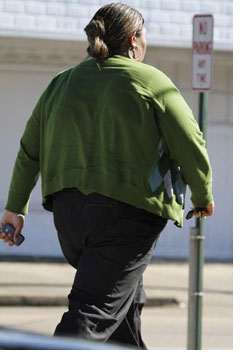 Diabetes in Los Angeles has hit an all-time high, with a new public health report showing that 9.1% of adults have Type 2 diabetes, which usually is caused by obesity.
Diabetes in Los Angeles has hit an all-time high, with a new public health report showing that 9.1% of adults have Type 2 diabetes, which usually is caused by obesity.
The report covers the years from 1997, when the figure was 6.6%, to 2007.
“It is unacceptable that so many people are suffering from a disease that, in most cases, can be prevented or controlled,” said Dr. Jonathan E. Fielding, the county’s director of public health. “Exercising regularly, making healthy eating choices and controlling or reducing weight can help prevent, control or even reverse diabetes.”
In a press release, Fielding noted that diabetes is the 6th leading cause of death in the county and a contributor to the No. 1 killer, cardiovascular disease.
The report, Trends in Diabetes: A Reversible Public Health Crisis, was issued in conjunction with the American Diabetes Association of Los Angeles.
County health officials will take part in the diabetes association’s “Feria de Salud” on Olvera Street in Downtown Los Angeles. The event will take place on Sunday from 10 a.m. to 3 p.m.
Posted 11/4/10
New health chief rolls into town
November 4, 2010
In the public imagination, San Francisco and Los Angeles have long been California’s odd couple. They’ve got cable cars, we’ve got freeways. They’ve got cioppino, we’ve got burgers. They’ve got the pennant-winning Giants, we’ve got…oh, never mind.
But soon San Francisco and L.A. will have someone very important in common:
Dr. Mitchell Katz.
Katz, San Francisco’s top health official since 1997, is set to leave the City by the Bay to become L.A. County’s director of health services in January.
His charge: to lead the vast county health care system into the future—fast. In the course of the next three years, Katz and his department will seek to reshape how care is delivered here. That means implementing national health care reforms that emphasize preventive care and increase access to outpatient services rather than continuing to pour resources into the large public hospitals that have long been the cornerstones of the L.A. system.
“Something I’d like to work on in Los Angeles is creation of a comprehensive ambulatory care system that includes both the private providers and the public providers,” Katz said, describing the county as the “glue” that would unite the systems. “Every clinic has to be clearly connected to a hospital that takes their referrals.”
He also wants to create a “system of record” in which each patient will have a “primary care home” and medical records in a centralized registry. That will make it easier for providers to know, for example, which patients have diabetes and to make sure they keep up with the eye exams their condition requires.
Katz, 50, said he is a “change agent, not a figurehead.” Even as San Francisco’s top health official, he still makes a point of working as a hands-on doctor for about one day a week—something that the Harvard Medical School grad intends to keep doing when he gets to L.A.
“You find out what’s working and what isn’t,” he said. Moreover, the frontline work creates credibility and a sense of shared understanding with the staff—which are important when it comes time to propose new ways of doing things.
“The natural response to an administrator is ‘You don’t know what it’s like to take care of our patients.’ Well, no one ever says that to me.
“When I’m in my room, I have my stethoscope, my prescription pad. I’m like anyone else.”
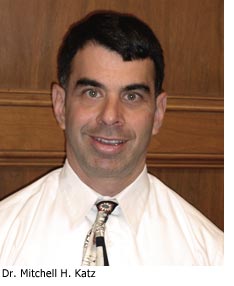 Katz, who will earn $355,000 a year in L.A., was recruited to come here two years ago but declined, citing unfinished work in San Francisco. That included seeing through the implementation of the award-winning Healthy San Francisco, a voluntary universal healthcare program that provides coverage to more than 54,000 people.
Katz, who will earn $355,000 a year in L.A., was recruited to come here two years ago but declined, citing unfinished work in San Francisco. That included seeing through the implementation of the award-winning Healthy San Francisco, a voluntary universal healthcare program that provides coverage to more than 54,000 people.
Making the move now, he said, just “feels right.” Many in the Los Angeles County Health Department, which is battling a large deficit and has not had a permanent leader for more than two years, have reached out to him by phone or email since his appointment, offering to do “everything they can to help me,” Katz said.
While Katz believes L.A. and San Francisco are far from polar opposites from a health care perspective—“I think they are more alike than different”—he knows that his management approach will have to change somewhat when he makes the move.
“I’m a very hands-on person,” Katz said. “I know every single health center in San Francisco that’s part of my department. Most of them I’ve actually worked in as a doctor. I can bicycle to any of them.”
In L.A., “I have to think of a completely different way to be. You can’t do a lot of walking around when it takes two hours to drive somewhere.”
The county’s vast sprawl can be even more daunting if you’re a self-described bad driver.
“I’m terrible!” Katz said. “It’s certainly going to be a challenge to me.”
Katz, a committed bicycle commuter in San Francisco, said he can often be seen pedaling around town in tie and jacket, his backpack stuffed with papers. “It’s not unusual,” he said, “for someone to yell out, ‘Hi, Dr. Katz!’ “
After he moves to L.A. in January (his partner, Igael Gurin-Malous, a teacher, and their kids Maxwell, 8, and Roxie, 6, will join him when the school year is over) Katz intends to continue his cycling ways.
He’s looking for a house in a neighborhood, perhaps Silver Lake or Los Feliz, that’s within biking distance of his new office and County-USC Medical Center. He knows he will need to get behind the wheel to get to more far-flung hospitals such as Olive View-UCLA Medical Center in Sylmar. “I’ll just have to do it,” he said.
But he doesn’t sound like he’s planning to become a Southern California car culture convert any time soon.
“I do not love cars,” he said. “I think that the world would be a better place if more people bicycled.”
Posted 10/25/10
Let the meeting come to you
November 4, 2010
Interested in keeping up with important decisions affecting the environment and land use in L.A. County? Regional Planning Commission meetings are now just a mouse click away. It’s no longer necessary to dig through pages of transcripts to see what happened, and you won’t need to make a long trek across town to show up in person, either. Beginning this week, live and recorded Regional Planning meetings will be available online, in living color, at http://planning.lacounty.gov/video.
The Regional Planning Commission covers many issues that affect residents in unincorporated areas of the Third District. Upcoming decisions include adopting a new general plan for Los Angeles County, which will literally shape unincorporated communities for generations to come. It will affect how much development will occur in sensitive natural environments countywide, as well as developments affecting individual neighborhoods from Topanga Canyon to Universal City.
Systems analyst Dennis Slavin spearheaded the effort to update the technology of the meeting room and offer a bird’s-eye view of the meetings to the public. His goal was to make it easier for residents to participate, and to improve the transparency and efficiency of the process. When he took on the project, the room’s technology had not been updated in nearly a half-century. Presentations involved paper maps that were difficult to see even for those present at the meetings. Now, “meetings include visual presentations and GIS mapping, a full production that will provide a quality presentation to the public,” Slavin says.
In addition to streaming video of the meeting, the webcasts also allow viewers to get a close-up look at materials being presented and to access documents like the meeting agenda from the same screen.
You can sample the new technology by tuning in to the next commission meeting, on Wednesday, November 10.
Posted 11/4/10




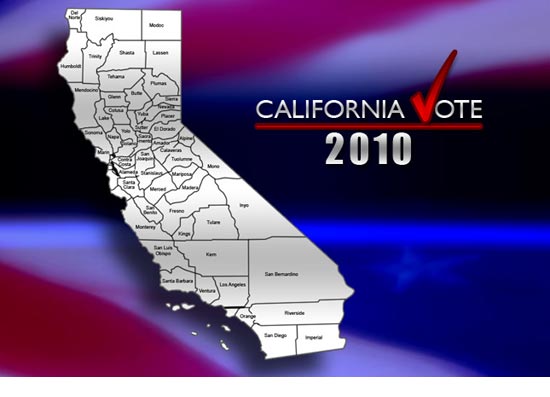

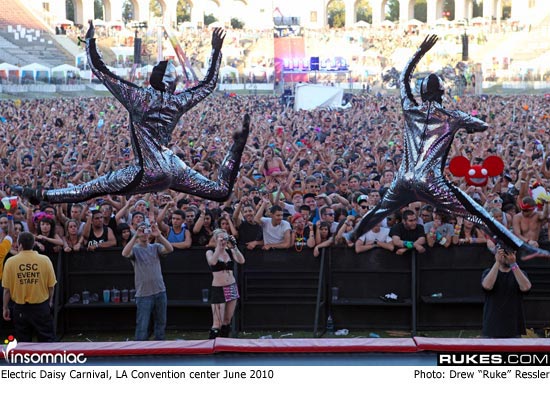
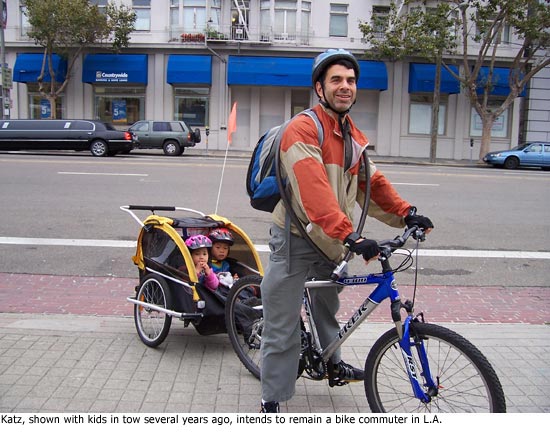
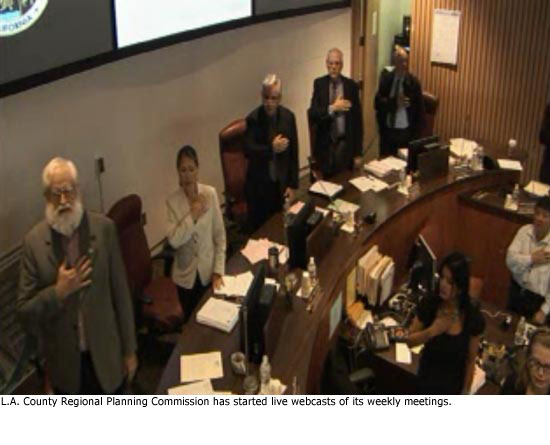





 Check for the latest closure information
Check for the latest closure information








